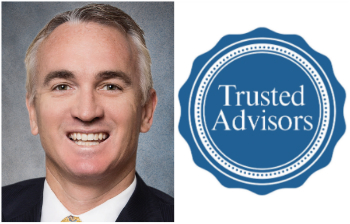
Generally, all income-producing properties, excluding unimproved land, are considered commercial real estate (CRE). The two financing options for CRE are recourse and nonrecourse loans. There are often many questions surrounding the two, their complexities, and which type is right for the borrower. At First Bank, we work with clients to guide them on determining the best CRE financing solutions available. It’s important for borrowers to stay informed since the essential difference is what assets the lender could acquire should the borrower fail to repay the loan.
RECOURSE LOANS
With recourse loans, the lender has the ability to collect the difference between the sale price of the property and the amount owed on the note. In the case of a deficiency, the lender could go after the guarantor’s other assets.
NONRECOURSE LOANS
A nonrecourse loan, however, generally limits the lender’s repayment source only to the sale of the commercial property. Given this criteria, you may ask why a borrower would ever choose a recourse loan? Well, the simple answer is that it just depends on the circumstance.
TYPES OF CRE LENDERS
Typically, CRE is financed by: Commercial mortgage backed securities lenders (CMBS), government sponsored entities (GSEs, such as Fannie Mae and Freddie Mac), life insurance companies, and commercial banks. Since they have different funding sources, there are intricacies in their lending methods. Commercial banks are typically the only ones to include a recourse guaranty in their portfolio loan terms.
In the case of CMBS and GSE lenders, CRE loans are not entirely held on their books. Funded loans are combined together and then securitized into bonds, which are then sold on the open market. Since the bond holders purchase these securities with the expectation of earning interest over the bond’s duration, these lenders must be rigid with their loan structuring to match their funding source. Borrower consideration for a competitive fixed rate over a long term, agree to “make whole” provisions for interest, impounds for taxes and property insurance, and “reserves” for future CAPEX. The potential negative attribute of the CMBS/GSE loan can rest with the servicer. Often, the servicer does not originate the loan so they lack the relationship. Also the servicer is bound by a strict servicing agreement to protect the bondholders. This can make managing the commercial property difficult as the servicer has little incentive to “work out” issues with the borrower.
Life insurance companies generally offer flexibility since they hold CRE loans as revenue sources for future claims. In exchange for a competitive rate, the life insurance company ideally takes collateral on low leverage, high-asset quality properties with no deferred maintenance. So, a property with a speculative component will likely find limited interest from a life insurance company. Like the CMBS/GSE loan, the life insurance company loan also includes certain provisions called the “bad boy” carve-out guaranty. Violation of “bad boy” provisions allows the lender to potentially seek recourse against the borrower’s owners. Following the Great Recession, such provisions have, in some cases, expanded to include minimum debt service coverage ratios that expose owners to claw backs on distributions from their CRE. This new version of nonrecourse can look a lot like recourse, so it’s crucial for borrowers to understand all carve out terms.
Last but not least, is the recourse wielding commercial bank. Like the life insurance company, it typically holds its loans, but banks, like First Bank, seek a deeper relationship with the borrower’s owners. A mentor always told me to “get nonrecourse when you need leverage and take recourse when you need terms.” Ways a guarantor can reduce their contingent liability includes limited repayment guaranties and/or recourse burn off provisions. Another method to limit personal recourse is the formation of a holding company to function as the guarantor. With the addition of financial covenants as a credit enhancement for the bank, this can be an attractive way for a guarantor to mitigate personal recourse liability.
As always, speak with any First Bank commercial loan officer or a trusted advisor to determine the best manner to structure your investment financing as well as the lender type that’s right for you.
Andrew Zinn possesses over 16 years of lending experience in commercial real estate with the ability to structure and close loans between $2M and $20M. Andrew holds a B.A. Degree in Economics and is an honors graduate from Pacific Coast Banking School.
ANDREW ZINN SENIOR VICE PRESIDENT S. CALIFORNIA COMMERCIAL REAL ESTATE
(949) 475-6326 [email protected] FIRSTBANKS.COM
